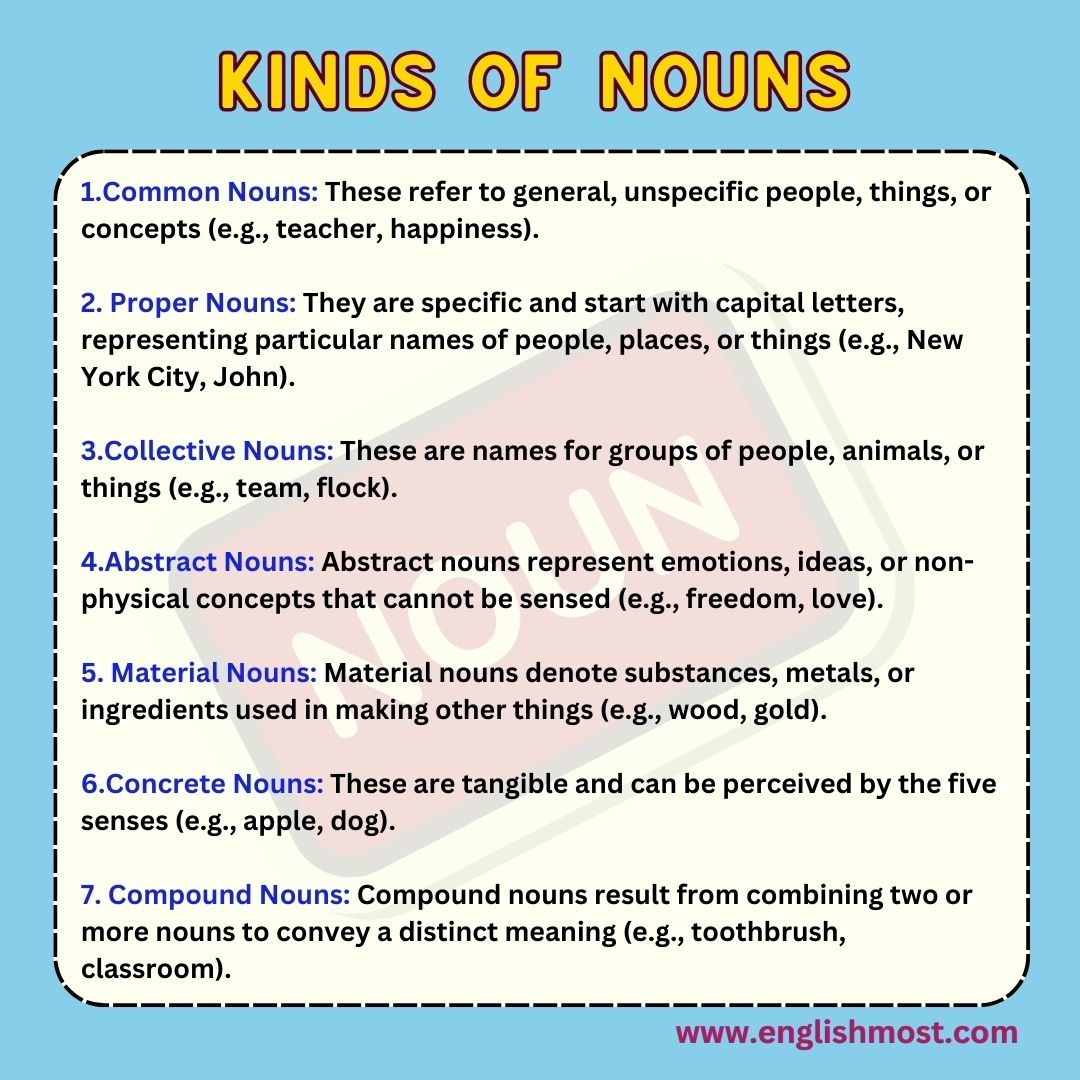Nouns are an essential part of speech in the English language. They are words that represent a person, place, thing, or idea. Nouns can be singular or plural and can also be categorized into common nouns, proper nouns, collective nouns, and abstract nouns. Understanding the different types of nouns and how they are used in sentences is crucial for effective communication.
When using nouns in sentences, it is important to identify their function and role. Nouns can serve as the subject of a sentence, the object of a verb, the object of a preposition, or the complement of a verb. By recognizing the role of nouns in a sentence, you can construct clear and coherent sentences that convey your intended meaning.
Noun Meaning and Examples
Common nouns are general names for people, places, things, or ideas. Examples of common nouns include: dog, city, book, happiness. Proper nouns, on the other hand, are specific names of people, places, or things and are capitalized. Examples of proper nouns include: John, Paris, Coca-Cola, Christmas. Collective nouns refer to groups of people or things. Examples of collective nouns include: team, herd, family, flock. Abstract nouns represent ideas, emotions, or concepts. Examples of abstract nouns include: love, freedom, courage, knowledge.
Nouns can also be classified as countable or uncountable. Countable nouns can be quantified and can be used with numbers. Examples of countable nouns include: apple, chair, student, car. Uncountable nouns, on the other hand, cannot be counted and do not have a plural form. Examples of uncountable nouns include: water, air, furniture, information. It is important to pay attention to the countability of nouns when using them in sentences.
In addition to their grammatical functions, nouns can also be used to create compound nouns by combining two or more words. Examples of compound nouns include: toothbrush, greenhouse, swimming pool, high school. Compound nouns can help provide clarity and specificity in communication by combining multiple words into a single noun.
Overall, nouns play a crucial role in the English language by representing people, places, things, and ideas. By understanding the different types of nouns and how they are used in sentences, you can enhance your communication skills and effectively convey your thoughts and ideas. Practice using nouns in various contexts to improve your grammar and vocabulary skills.
Next time you write a sentence, pay attention to the nouns you use and their functions within the sentence. By mastering the use of nouns, you can become a more confident and proficient communicator in the English language.
